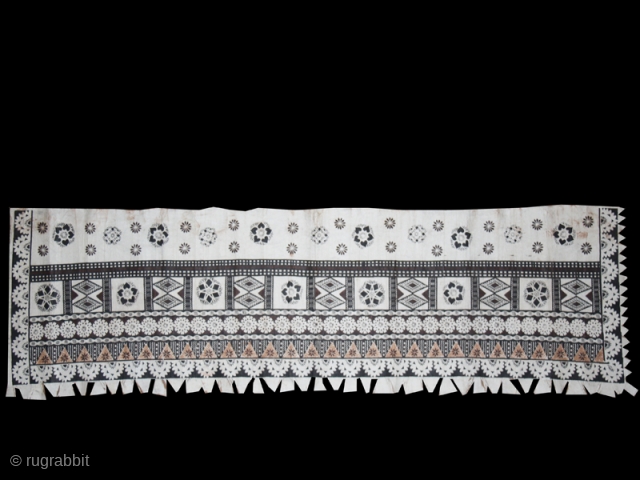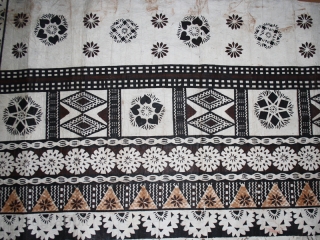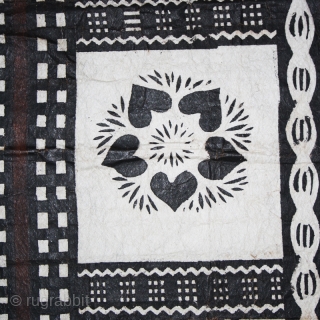Back
Tapa barkcloth “Masi” cod. 0686.Polynesia. Tree bark beaten. Circa mid. xx° century. Cm. 68 x 240. Very good condition. The piece has been exhibited on June 2013 in the tribal art gallery Kortmann – Dortmund for the exhibition “Tapa”. Decorated Barkcloth, Fiji Islands
According to Clunie (1986: p.126), "Masi or malo - barkcloth beaten from the bast of Paper Mulberry - was one of the most commonplace but significant of products, having a symbolic worth evident in life crisis rituals and in presentations cementing the bonds between related tribes. Although these spiritual qualities have long since been clouded by the rush to clad Christians in cotton, this barkcloth, a singularly female product, was once surrounded by an aura akin to that of yaqona and the tabua whale tooth. It was the woman's privilege to make masi, a man's prerogative to wear it...The finest sheets, worn as turbans by priests and chiefs, were as delicate to the eye and soft to the touch as gauzy tissue paper.
price:
P.O.R.
- Home
- Antique Rugs by Region
- Category
- Profiles
- Post Items Free
- Albums
- Benaki Museum of Islamic Art
- Budapest: Ottoman Carpets
- Gulbenkian Museum
- Islamic Carpets. Brooklyn
- Islamic Textiles. Brooklyn
- Konya Museum: Rugs
- MKG, Hamburg
- MMA: Caucasian Carpets
- MMA: Mamluk Carpets
- MMA: Mughal Indian Carpets
- MMA: Ottoman Carpets
- MMA: Safavid Persian Carpets
- MMA: Turkmen Rugs
- McCoy Jones Kilims
- Ottoman textiles. Met
- Philadelphia Museum
- Rugs and Carpets: Berlin
- Seljuqs at the Met
- TIEM, Istanbul: Carpets
- V&A: Classical Carpets
- Vakiflar Carpets: Istanbul
- Baluch Rugs: Indianapolis
- Gallery Exhibitions
- Jaf an Exhibition
- Alberto Levi Gallery
- Andean Textile
- Christie's London: 2016
- Francesca Galloway
- HALI at 40
- ICOC Washington, DC 2018
- Jajims of the Shahsavan
- London Islamic Week April, 2018
- Mongolian Felts
- Navajo Rugs: JB Moore
- Persian Piled Weavings
- SF Tribal & Textile Art Show 2020
- SF Tribal 2019
- Sotheby's: C. Alexander
- Turkish Prayer Rugs
- Turkmen Main Carpets ICOC 2007











